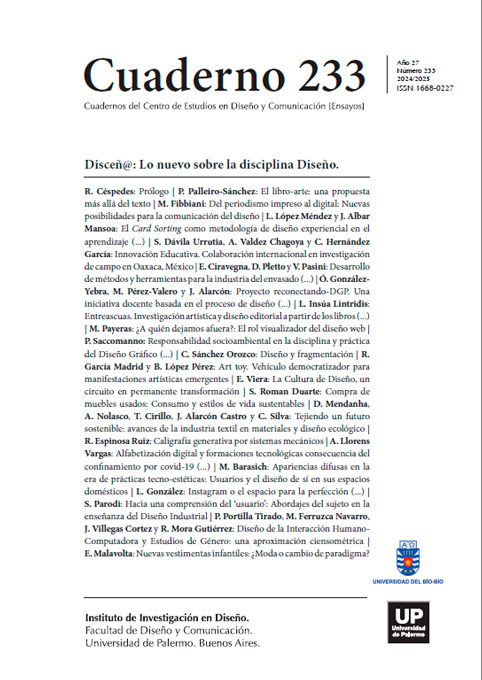Caligrafía generativa por sistemas mecánicos
Resumen
En el ámbito del diseño generativo, la entrega de control a sistemas automatizados para explorar y crear nuevas formas es fundamental.
Citas
Bircher, M. (2022) Numerically Controlled Pen Plotters in Art: Building an Experimental Pen Plotter [Tesis de Maestría], University of Lapland, Faculty of Art and Design.
Galanter, P. (2003). What is Generative Art? Complexity theory as a context for art theory. En International Conference on Generative Art. Generative Design Lab, Milan Polytechnic.
Galanter, P. (2008). What is Complexism? Generative Art and the Cultures of Science and the Humanities. En International Conference on Generative Art. Generative Design Lab, Milan Polytechnic.
Jones, D., Brown, A.R., y d’Inverno, M. (2012). The Extended Composer. Creative Reflection and Extension with Generative Tools. En J. McCormack y M. d’Inverno (Ed.), Computers and Creativity (pp. 175-204). Springer.
Oxman, N., Laucks, J., Kayser, M., Duro-Royo, J. y Gonzales Uribe, C. (2017). Silk pavilion: a case study in fibre-based digital fabrication. En F. Gramazio, M. Kohler y S. Langenberg (Ed.) Fabricate: negotiating design et making (pp. 148-255). UCL Press.
Pearson, M. (2011). Generative art: a practical guide using processing. Manning. Pereira, F., Martins, T., Rebelo, S. y Bicker, J. (2019). Generative Type Design: Creating Glyphs from Typographical Skeletons. En Artech 2019, 9th International Conference on Digital and Interactive Arts.
Los autores/as que publiquen en esta revista ceden los derechos de autor y de publicación a "Cuadernos del Centro de Estudios de Diseño y Comunicación", Aceptando el registro de su trabajo bajo una licencia de atribución de Creative Commons, que permite a terceros utilizar lo publicado siempre que de el crédito pertinente a los autores y a esta revista.


